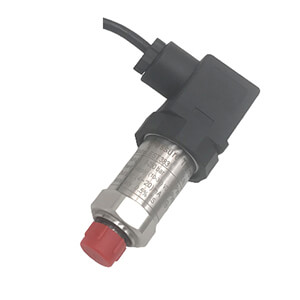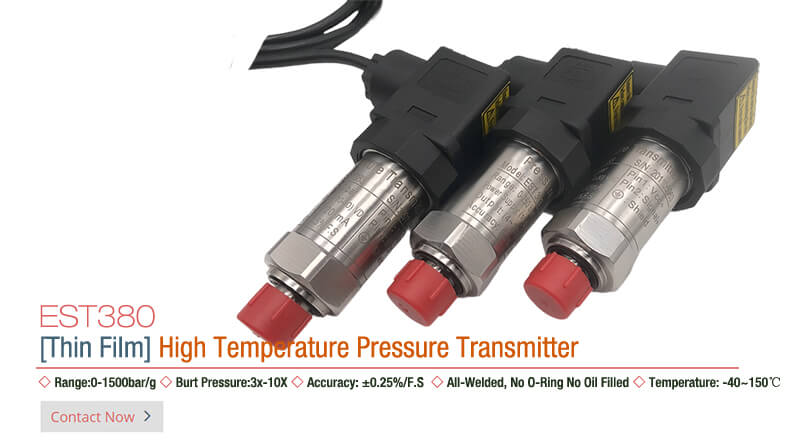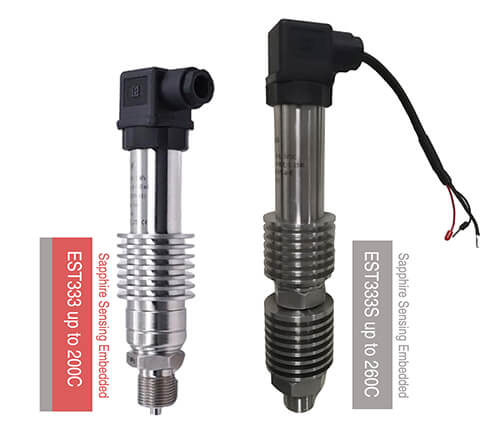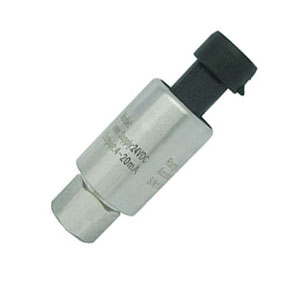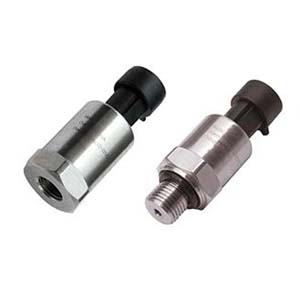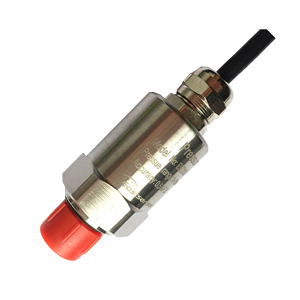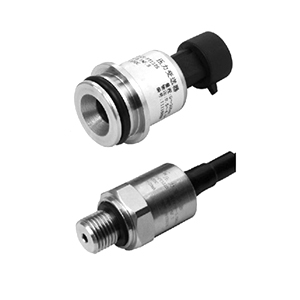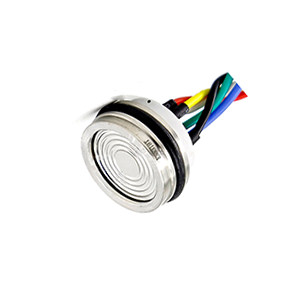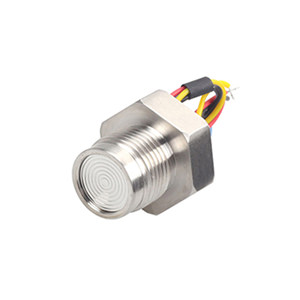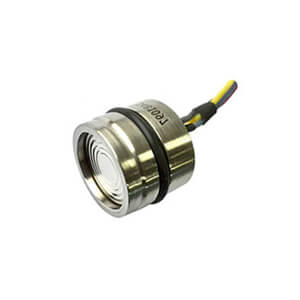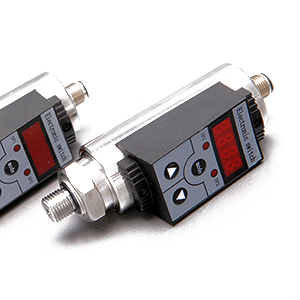High Temperature Pressure Transmitters – Thin-Film Solution
EST380 is sputter thin film type pressure transmitter, that features heat-resistance (-40~150℃ or even 200℃), wide range and high accuracy (0.1%-0.25%/FS). It includes protective circuits that feature pressure peak damping and load-dump protection, and it is resistant to EMV stability reverse voltage. It is calibrated electronically, ensuring its readings have minimal total error and are reliable over time.
For EST380, the hermetically sealed thin film measuring cell contributes to its long-term resistance to leakage and stability (no oil fluid filled). Its stainless-steel membrane, which is vacuum-sealed and highly burst-resistant, suits all standard media in various fields (hydraulics, pneumatics, environmental and process technologies, semi-conductor technologies, and automotive engineering), given their compatibility with stainless steel.
It chiefly serves standard applications in hydraulics and other sectors. Given its high accuracy (0.1% | 0.25% | 0.5%) and robust structure (no O-Ring), compact design (short size), it is versatile for many industrial uses. You can select from a different pressure range of pressure transmitters (0-4bar; 0-10bar, 0-500bar, 0-1000bar, 0-2000bar or more) thanks to the combination of different mechanical and electronic connections.
Features & Benefits
- Pressure Type: Gauge/Seal gauge/Absolute
- Sensing Principle: Sputter Thin Film Sensing
- Medium Temperature: -40℃~150℃-230℃
- Structure: All-welded, No O-rings, No Oil Filled (free leakage risk)
- Range: 0~4bar~1500bar-2000bar
- Accuracy: ±0.1%F.S (>10bar), ±0.25%F.S, ±0.5%F.S
- Stability: 0.1%F.S/Year (typical), 0.3%F.S/Year (maximum)
- Signal Output: 4~20mA, 0~10/20mA, 0/5~10V | IC2/RS485
- Power Supply: 3.3V/12~30Vdc
- Response Time: ≤3ms (10%-90%)
Applications
- Hydraulics
- Pneumatics
- Environmental & Process technologies
- Semi-conductor technologies
- Automotive engineering
- Heavy Duty industries
- EV battery cells
EST380 Technical Data & Performance
| Reference Accuracy (°C.) | 0.1 | 0.25 | 0.5 |
| Non-linearity | <=0.1% | <=0.2% | <=0.4% |
| Hysteresis | <=0.05% | <=0.05% | <=0.1% |
| Repeatability | <=0.05% | <=0.05% | <=0.1% |
| Long-term Stability (%FS) | <=0.1% | <=0.2% | <=0.5% |
| Including Linearity Hysteresis+ Repeatability from zero; Square root output accuracy=1.5X of the linear | |||
| Temperature. Drift @ Zero | <=0.01% | <=0.03% | <=0.05% |
| Sensitivity. Drift @ Zero | <=0.01% | <=0.03% | <=0.05% |
EST380 Environment & Working Conditions
| Compensation Temperature | 0℃~+100℃(≤default),-20℃~120℃(optional) |
| Measuring Temperature | -40℃~+150℃(regular type)/-40℃~+200℃(with heat radiator) |
| Storage Temperature | -40℃~+125℃ |
| Ingress Protection | IP65 (IP67) |
| Atmospheric Pressure | 86kPa~106kPa |
| Vibration | 20g(@10Hz~2000Hz) |
| Shock | 100g/11ms |
| Life-Span/usage | >10 million load cycles (within the measuring range) |
Technology
Piezoresistive based transducers rely on the piezoresistive effect which occurs when the electrical resistance of a material changes in response to applied mechanical strain. In metals, this effect is realized when the change in geometry with applied mechanical strain results in a small increase or decrease in the resistance of the metal. The piezoresistive effect in silicon is due primarily to changes at the atomic level and is approximately two orders of magnitude larger than in metals.
Sputter deposited thin film pressure sensor is a kind of piezoresistive pressure sensors, difference exist that the thin-film sensor consists of a resistor pattern that is vaporized or sputter-deposited onto the force-summing element (the measuring diaphragm). In some transducers the resistors are not directly mounted on the diaphragm but are on a beam linked to the diaphragm by a push rod.
Other High-Temperature Solutions

